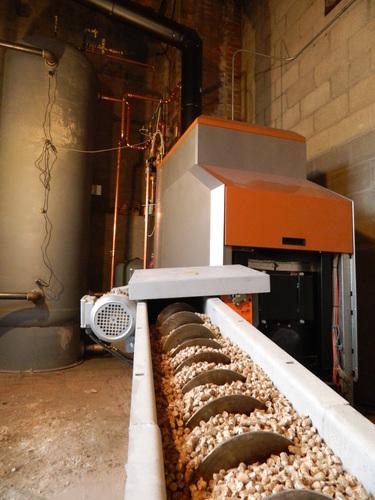WESTMINSTER — Regenerative farmers like to say, “It's not the cow, it's the how,” when people tell them animal agriculture is overheating the planet. I'm not clever enough to think up a saying like to defend wood heat, but the same concept applies: If we do it dumb, it's bad. If we do it smart, it isn't.
So in response to Rick Cowan, here are a couple of thoughts about the Affordable Heat Act.
One: I sure was glad my mom had a wood stove during her recent 72-hour outage. Unlike most of her neighbors, she was warm and comfortable.
Two: All wood will eventually release its carbon and methane, whether it is burned or not. If it rots, it will not give off black soot, so that's a clear gain. So, too, is the nourishment and housing a dead tree provides for all kinds of wildlife.
But we are life, too, and we need to stay warm. We have a responsibility to cause as little harm as possible, which is why I hope the Affordable Heat Act puts real muscle behind the effort to insulate all Vermont buildings well.
As to wood pellets, they are a far cleaner and more efficient way to burn wood. That means fewer trees die, and there are fewer emissions than from cordwood.
* * *
And here's where the “how” comes in: Pellets here in the Northeast are made mostly from the waste wood from lumber mills. They do not come from monoculture “forests” in the South, and they are not shipped thousands of miles to reach us.
Pellet mills are widely scattered, and the companies ship from whatever mill is nearest, just as we'd want them to do. Lisa Merton and Alan Dater's film Burned: Are Trees the New Coal? is highly accurate for what it's talking about, but that is not the pellet industry of the Northeast. Here, we have a rare fit between the natural world and human needs.
Fuel comparisons need to go far beyond measurements of emissions at the smokestack to include the entire life cycle of the fuel. In the Northeast, wood is local and regenerates abundantly, adding to and subtracting from atmospheric carbon depending on the stage of the tree's life, while keeping wealth in our communities.
Our goal should be to avoid burning any kind of fuel, but until we have solar everything, we must make tradeoffs.
We do have an obligation to do our best, and that's not charity. We are nature. We depend on the cycle of life in all its forms, many of which we are far from understanding. Probably the best thing for the planet would be if we humans largely died off, but I ain't fer it.
So I support S.5, warily. We'll need to keep an eye on things. If it turns out there are mistakes in the law, we must fix them down the road.
The most important thing is to get those buildings insulated. Then all our problems will be much smaller.
